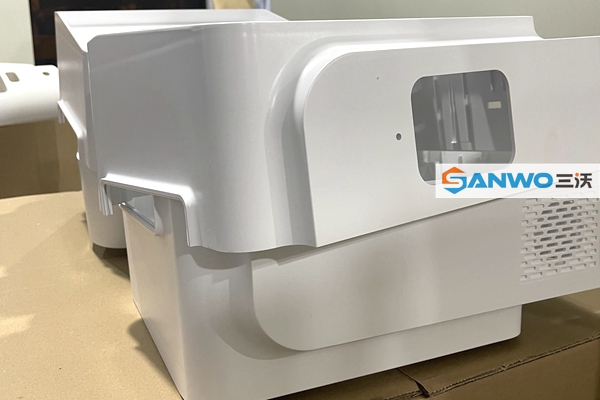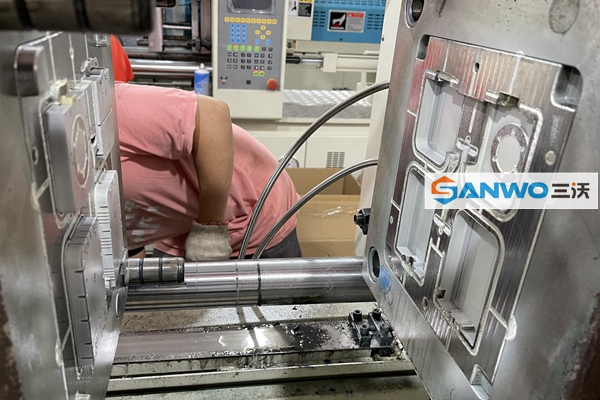Using Prototype Tooling for Manufacturing
Prototype tooling, also known as rapid tooling, or bridge tooling, is a great way to develop and test products for fit, form, and function during the product development processes. Since the design and validation process typically consists of low volume runs, prototype tooling can be quite cost-effective than high volume production tooling.
Why Use Prototype Tooling
Appropriate tool selection is a critical step in the manufacturing processes. Production tooling can be very expensive, then, prototype tooling becomes a way to replace. And it is minimizing upfront investment when launching a new projects.

Options of Prototype Tooling
There are several options of prototype tooling for your designs. The one you choose critically determines on what you demand on accomplishing with the prototype.
Urethane Molding
Urethane molding also known as urethane casting or vacuum casting, is a method of low volume production that using polyurethane plastic materials to manufacture prototypes. These final parts are commonly best used for marketing samples, for the reason that they can be finished well as hard-tooled plastic parts. For the materials are limited, there may not be able to produce the same qualities which the production plastics can be. Urethane molding is also a cost-effective method of low quantities prototypes at proof-of-concept stage.
![]()
Soft Tooling
Soft tooling is a method that commonly-used in the injection molding industry for high volume parts, providing relatively inexpensive tooling with using intended production materials. Usually built with aluminum cores and cavities, soft tooling has some different variations or options. Typically, tools and samples can be turned around in a few weeks. Soft tooling could be an option for early prototype building for simple parts with loose tolerance, normal functions and fitment. Compared with other tooling methods, soft tools have limits in design and dimensional changes while the tooling is complete and sampled.

Hard Tooling
Hard tooling is one of the best option for engineered parts of testing required, tight tolerance needed, and intentionally functional used. With this option, the upfront cost could be the most expensive, and lead time will be the longest. But it most likely will save time and money later in the production. Hard tooling has the ability to use production resin and can adapt to the design and dimensional changes even for the after sampled parts. Hard tooling can also support condition for process development and verification in the early program timeline. It can also provide to supply hundreds of parts, bridging the gap from prototype to production.

Benefits of Rapid Tooling for Prototypes
Prototype tools are constructed from softer tooling materials and are usually simplified to a single-cavity prototype instead of multi-cavity production. Working with an experienced custom injection molding supplier to understand the nuances through the lens of prototype injection molding helps verify information prior to decision-making:
1.Test the difference among plastic material.
Prototype tooling is intentionally designed to accommodate low volume production. Therefore, any plastics up for consideration can be efficiently performance-tested and comparisons assessed without a major financial investment. Having the luxury of physically evaluating materials is a major advantage in making a final selection.

2. Confirm the parts geometry feasibility.
This is the perfect opportunity to see if the part fills properly without defects (voids, weld lines, flow marks, burning, sinks). If there are problems, it is relatively simple to revise the prototype tool with cuts or welds.
Likewise, adding or removing wall thickness, ribbing, or radii may be necessary to perfect part geometry for production. With prototype tooling, new dimensions can be applied, tested, and verified.
Unlike final production tools that are built to last a long time, the main goal of the prototype tool is to gather data.
3.Optimized the gate locations.
Gating allows the material runners to interface with the tool cavity, making their location and design pivotal in molded part quality.
An injection molding supplier experienced in Design for Manufacturability (DFM) analysis can provide the insights needed to properly place gates, and also guide prototype tool welds and cuts for appropriate gating adjustments. Doing so within the realm of prototype injection molding eliminates the cost and lost time in modifying the production tool. Moreover, it maintains production tool performance and lifespan.
4.Evaluate complex part geometries.
Tooling components like lifters and slides that are used to form undercuts in production tools are very complex and expensive, making it impractical to include them in a prototype mold. In order to test these features during prototype injection molding, hand-loaded inserts can be used in place of actual lifters, slides, and other challenging geometries.
5.Reduce production time.
Overall, it is quicker and cheaper to make changes to a prototype tool compared to the production tool.

Sanwo Rapid Manufacturing has the resources and experience to create and revise prototype tools in-house, and that’s a competitive advantage in the industry.
The information learned during prototype injection molding will:
- Lead to a final design that requires far fewer revisions to the production tool
- Save time and money on the back end of the project
- Optimize cycle times and reduce overall production costs



